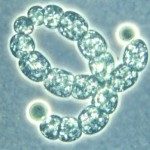Link to Pubmed [PMID] – 27572446
Link to DOI – 10.1038/nmicrobiol.2016.27
Nat Microbiol 2016 03; 1(): 16027
Together with plague, smallpox and typhus, epidemics of dysentery have been a major scourge of human populations for centuries(1). A previous genomic study concluded that Shigella dysenteriae type 1 (Sd1), the epidemic dysentery bacillus, emerged and spread worldwide after the First World War, with no clear pattern of transmission(2). This is not consistent with the massive cyclic dysentery epidemics reported in Europe during the eighteenth and nineteenth centuries(1,3,4) and the first isolation of Sd1 in Japan in 1897(5). Here, we report a whole-genome analysis of 331 Sd1 isolates from around the world, collected between 1915 and 2011, providing us with unprecedented insight into the historical spread of this pathogen. We show here that Sd1 has existed since at least the eighteenth century and that it swept the globe at the end of the nineteenth century, diversifying into distinct lineages associated with the First World War, Second World War and various conflicts or natural disasters across Africa, Asia and Central America. We also provide a unique historical perspective on the evolution of antibiotic resistance over a 100-year period, beginning decades before the antibiotic era, and identify a prevalent multiple antibiotic-resistant lineage in South Asia that was transmitted in several waves to Africa, where it caused severe outbreaks of disease.







